Perched on a clifftop above sweeping sandy beaches, the Victorian town of Cromer – with its thriving pier and early 20th-century Pavilion Theatre – is a fine example of a classic seaside resort.
Spend the day playing on the beach with the kids or striding out along the coast with the dogs, and the evening enjoying a traditional end-of-the-pier show, said to be the only one of its kind in Europe.
Here is our 11-mile walking route starting and finishing in Cromer, Norfolk.
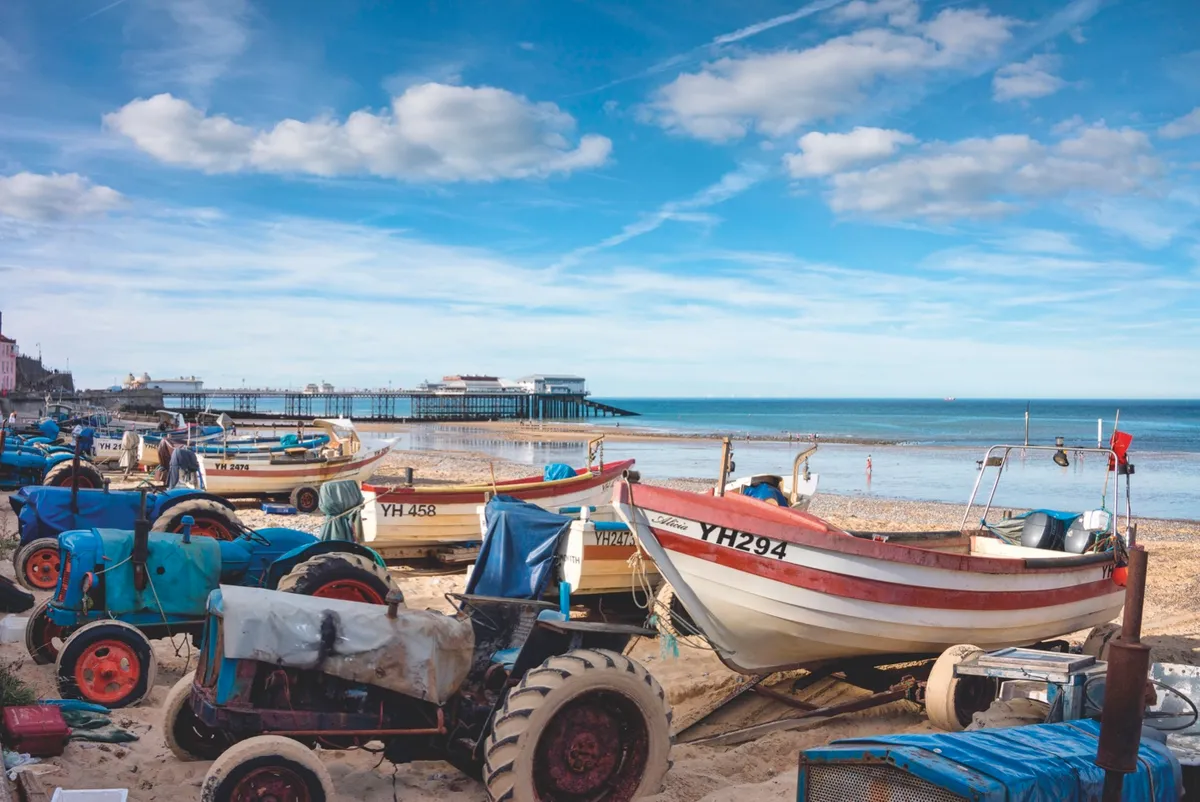
Town of little change
Cromer became a seaside resort in the Victorian era when holidaymakers travelled to the coast in search of sea breezes and those broad sandy beaches. Today, little has changed. There are alleyways and side streets to explore, packed with traditional shops, restaurants, cosy pubs, cafes, ice cream parlours and fish and chip shops. But the real taste of Cromer comes from its crabs. Watch as vintage tractors and crabbing boats are hauled up on the beach, while the rest of the vessels are out at sea tending to their pots.
Looking over all this is Cromer Church, the tallest tower in Norfolk. It’s a worthy attraction if the weather turns, along with the Henry Blogg lifeboat museum.
Full steam ahead
There is a lovely linear walk from Kelling Heath near Weybourne to Cromer. Stagecoach operates the Coasthopper, an excellent bus service that runs between Cromer and Weybourne on the A149. A more atmospheric option is to hop on the North Norfolk Railway’s Poppy Line at Sheringham, looking out to sea as the steam train chugs slowly on to Weybourne.
1. Lazing lizards
Alight the train at Weybourne station and follow a footpath west, staying parallel with the railway. You will soon arrive on to Kelling Heath.
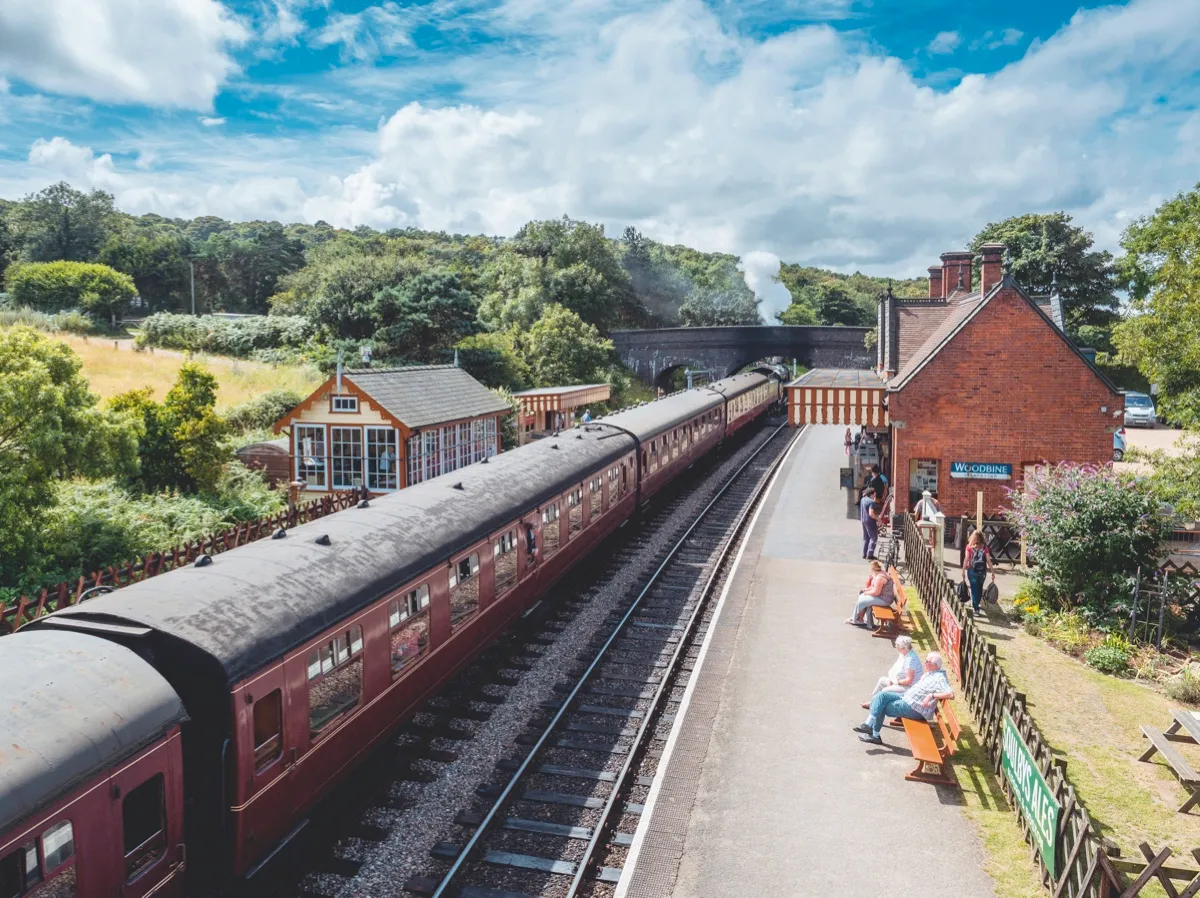
In August, these bright yellow bushes, along with clumps of purple bell heather, are a visual feast. For those with keen eyes, you may be lucky enough to spot a number of Britain’s native reptiles – such as slow worms, common lizards and adders – basking in the sun.
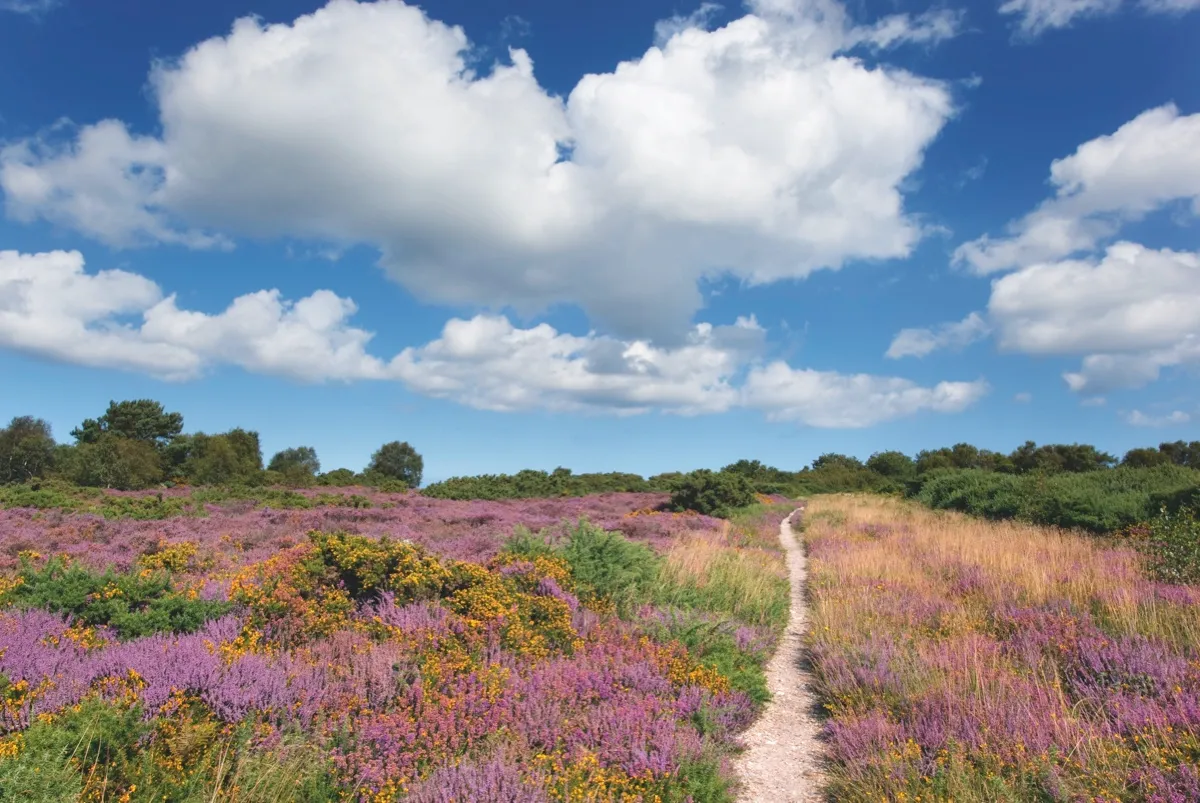
2. Sand under foot
The footpath stays close to the railway before arriving at a level crossing. Look out for steam trains as you step over the tracks, and then follow a sandy path that runs on to cross Holgate Hill road. Continue north, dipping into a sunken lane embowered with trees and hedgerows. Passing the Pheasant Hotel, the lane emerges on to the A149.

3. The sound of waves
Back at the A149, head west and then take the winding track – Meadow Lane – north towards the coast. At The Quag junction, turn right on another track to meet the shore at Kelling Hard. You’ll hear the sea before you reach it, the waves pulling at the shingle beach. From here, as you join the Peddars Way and Norfolk Coast Path, route finding becomes straightforward. Turn right, heading east as you stick faithfully to the shore.
4. A mammoth tea stop
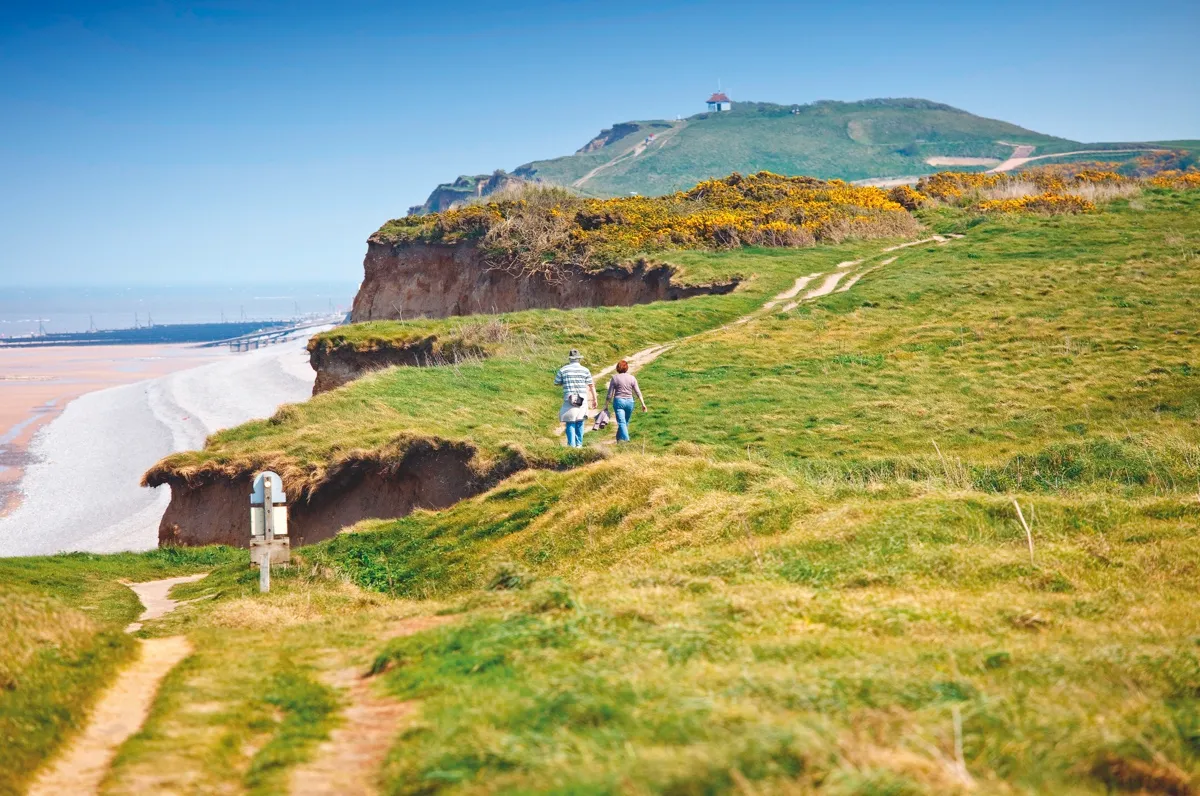
Pass a lifeboat station to arrive into Sheringham. This is a good place to break for lunch – there are plenty of tea rooms and The Mo Sheringham Museum is worth a look. The coastal path continues in an easterly direction from Sheringham, rising to a panoramic viewpoint known as the Beeston Bump. A little further on, you’ll arrive at Old Butts on the outskirts of West Runton.
5. Cromer in Sight
Head inland at Wood Hill and then rejoin the clifftop for an exhilarating finale into Cromer.
6. Vintage Feast
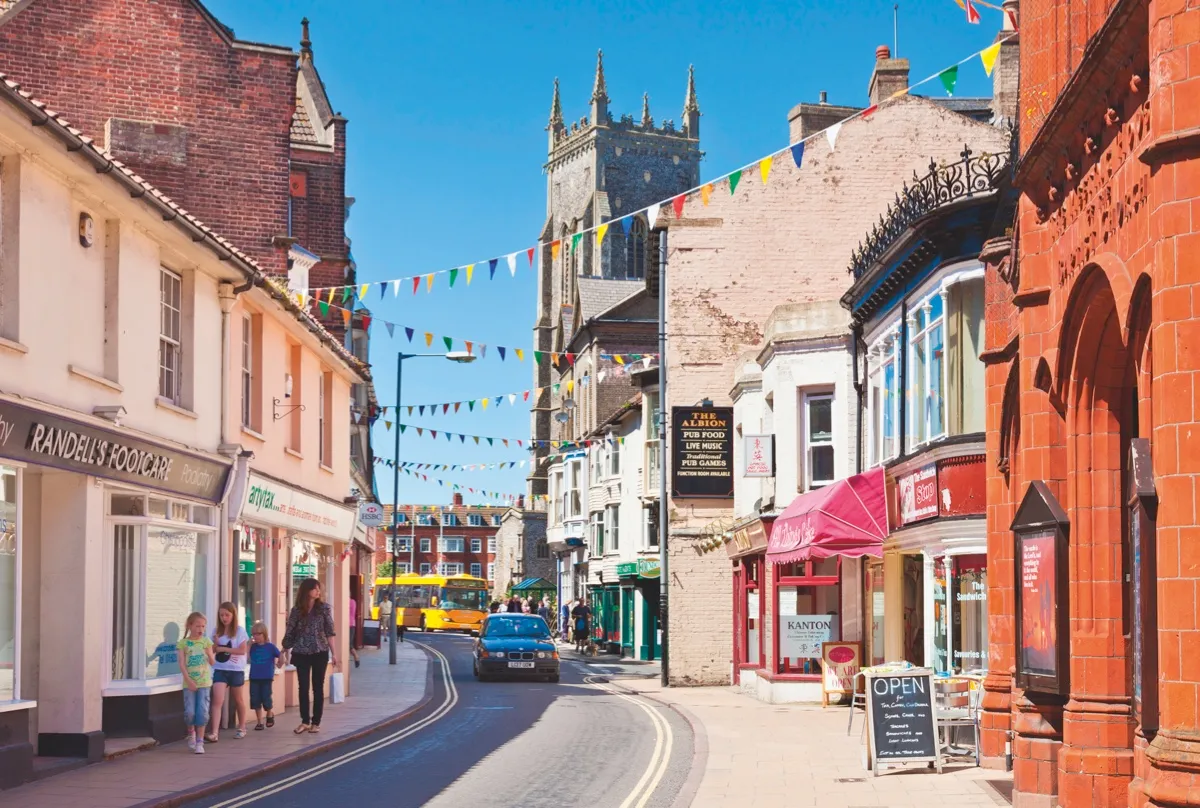
An ice cream is probably in order. Find Ice Cromer on New Street and sample one of their many flavours before taking a stroll along the pier. The beach will be dotted with old vintage tractors and small crabbing boats, the perfect cue to seek out John Lee’s Crab Stall on New Street.
Map
Click on the map below for an interactive version of the route.
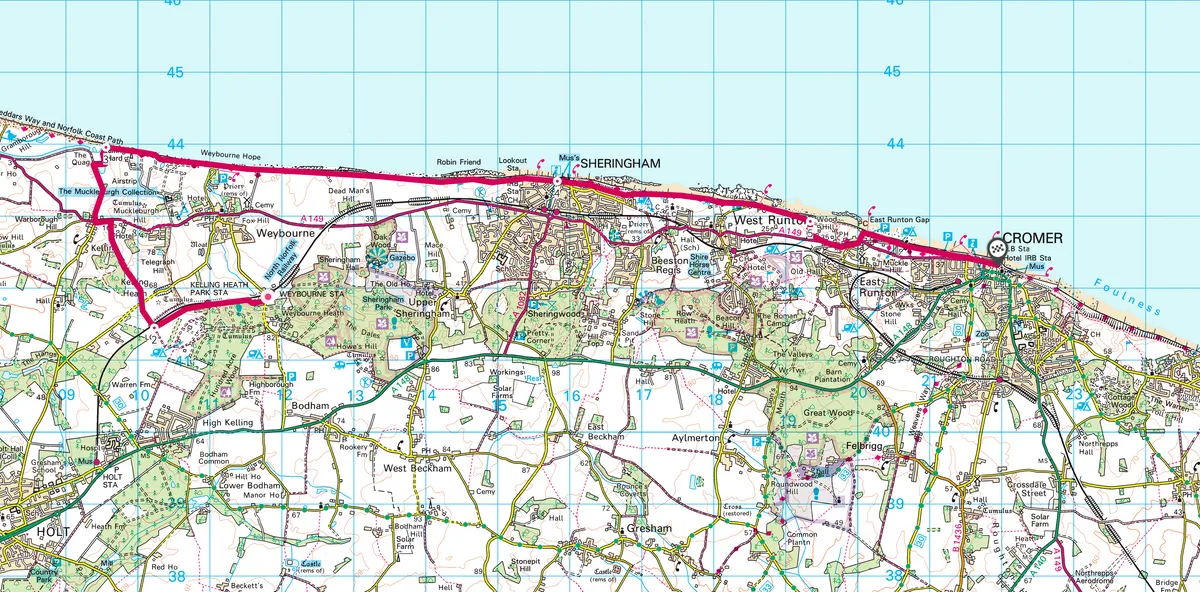
Explore Cromer pier
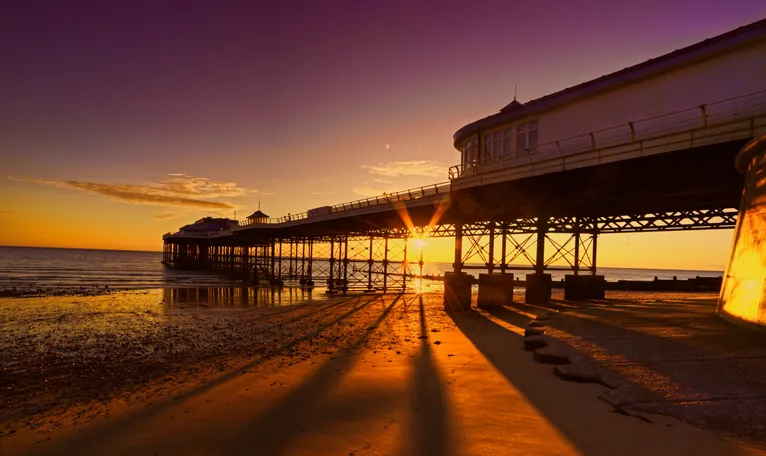
Catch a stunning show as both sunrise and sunset appear by a pier at Cromer in Norfolk, says Mark Rowe.
You don’t have to climb a mountain to enjoy sunrise and sunset shows of great drama. The pier at Cromer can offer that too. Due to the slightly disorienting geography of north Norfolk, Cromer’s pier sticks out north by north-east into the North Sea, so you can see the sun both rise and tumble towards the sea. Time your visit for a clear day and windless day and you are in for a treat.
Perhaps only the hardiest will get up (or stay up) for the true dark of 2.30am to see the full sequence of change from night to half-light to daylight. 4.30am will do. By then, in midsummer, the sun will have begun its journey across Norfolk’s skies. On a global scale, the North Sea is tiny. The rising sun makes it seem like a vast ocean.
Squabble of seagulls
Much is made of the woodland dawn chorus at this time of year, but the coastal chorus is striking, too. It’s perhaps a little eerie, with those gulls not yet paired up raucously breaking the silence. Newly fledged sparrow chicks line up plaintively on the pier railings, hopping and scuttling chirpily after their parents.
There are other reasons for liking Cromer’s pier: you don’t pay for the privilege of stepping foot on it, as you must at so many other piers around the UK. Come morning, families are happily fishing and dropping lines for crabs, and at its far end, rather than an amusement arcade, there’s a lifeboat station.
From the railings of the pier you can see the undulating four-mile coastal path that heads west to Sheringham, Cromer’s neighbour and rival for the seaside tourist shilling. This walk can be a lovely way to pass the hours between dawn and dusk and also gives the lie to the myth that Norfolk is spirit-level flat. You can either walk back to Cromer the same way, or hop on the branch line.
Lighthouse & lifeboats
There’s a charm to Cromer that lifts the spirits even without the intervention of the sun of high summer. Art galleries lie in wait with their evocative seascapes, there’s a lighthouse and the Henry Blogg lifeboat museum. Named for Cromer’s revered coxswain and the RNLI’s most decorated lifeboatman, it has a 1930s lifeboat and genuinely impressive displays. The Rocket House cafe on the top floor is great too, though they miss an opportunity by not opening beyond 5pm.
As the sun begins to slowly sink behind Cromer’s yardarm, it steadily fills the Wash with a staggering gold sheen, as if molten metal were being dispensed from a pot. Come along on the right evening and
it really does seem as though the sea is on fire. Then the half light returns, and then darkness, for just a few hours.
